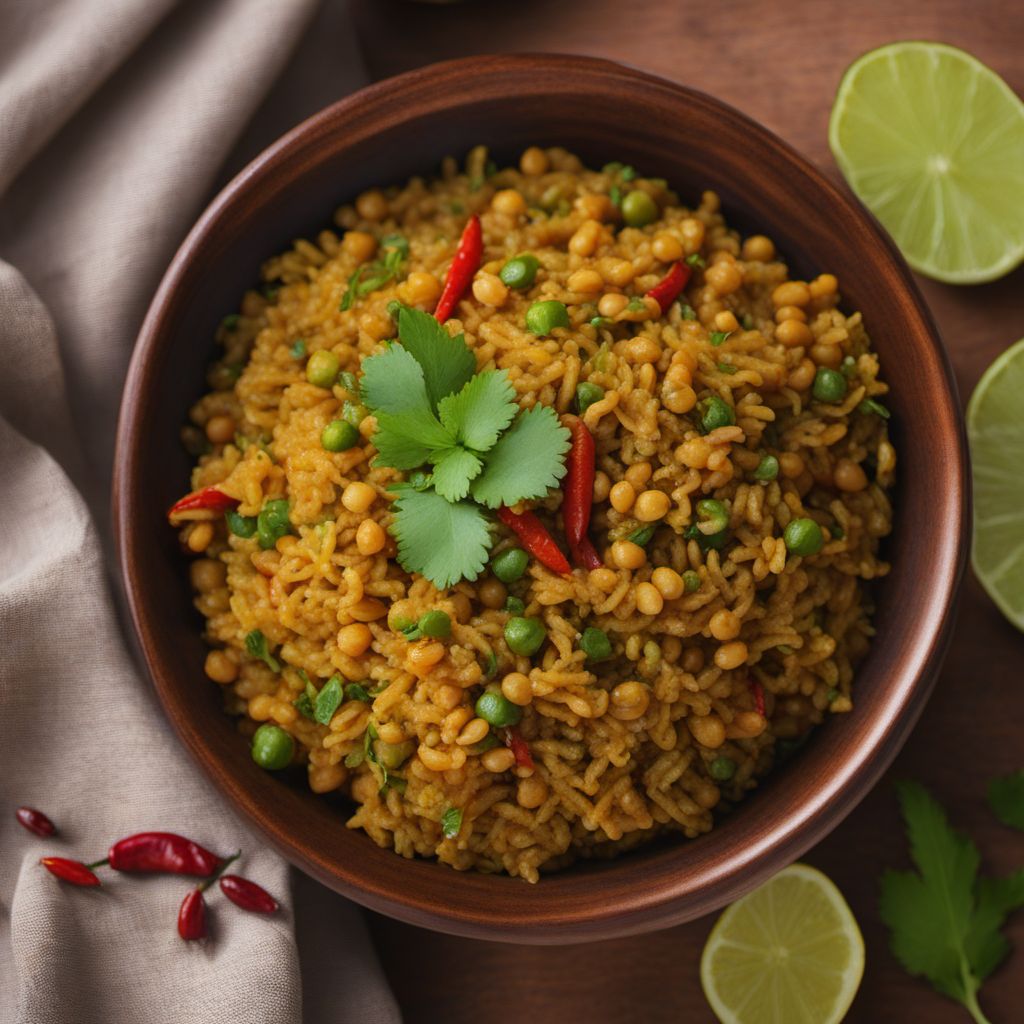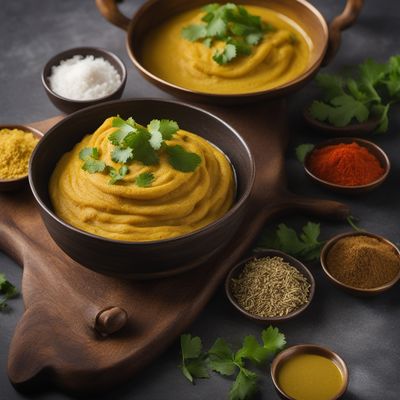
Recipe
Authentic Tamarind Rice
Tangy Tamarind Delight: Authentic Indian Pulihora Recipe
4.7 out of 5
Indulge in the flavors of Indian cuisine with this authentic Tamarind Rice recipe. Bursting with tangy and aromatic flavors, this dish is a staple in South Indian households and is often prepared during festivals and special occasions.
Metadata
Preparation time
15 minutes
Cooking time
20 minutes
Total time
35 minutes
Yields
4 servings
Preparation difficulty
Easy
Suitable for
Vegetarian, Vegan, Gluten-free, Dairy-free, Nut-free
Allergens
Peanuts
Not suitable for
Paleo, Keto, Low-carb, High-protein, Atkins
Ingredients
-
2 cups (400g) cooked rice 2 cups (400g) cooked rice
-
1 lemon-sized tamarind ball 1 lemon-sized tamarind ball
-
3 tablespoons vegetable oil 3 tablespoons vegetable oil
-
1 teaspoon mustard seeds 1 teaspoon mustard seeds
-
1 teaspoon chana dal (split Bengal gram) 1 teaspoon chana dal (split Bengal gram)
-
1 teaspoon urad dal (split black gram) 1 teaspoon urad dal (split black gram)
-
2 dried red chilies 2 dried red chilies
-
10-12 curry leaves 10-12 curry leaves
-
1/4 teaspoon turmeric powder 1/4 teaspoon turmeric powder
-
1/2 teaspoon red chili powder 1/2 teaspoon red chili powder
-
1/2 teaspoon coriander powder 1/2 teaspoon coriander powder
-
1/4 teaspoon asafoetida (hing) 1/4 teaspoon asafoetida (hing)
-
1/2 teaspoon salt (or to taste) 1/2 teaspoon salt (or to taste)
-
1/4 cup mixed vegetables (carrots, peas, bell peppers), finely chopped 1/4 cup mixed vegetables (carrots, peas, bell peppers), finely chopped
-
2 tablespoons roasted peanuts 2 tablespoons roasted peanuts
-
Fresh coriander leaves, for garnish Fresh coriander leaves, for garnish
Nutrition
- Calories (kcal / KJ): 250 kcal / 1046 KJ
- Fat (total, saturated): 8g, 1g
- Carbohydrates (total, sugars): 40g, 2g
- Protein: 5g
- Fiber: 3g
- Salt: 0.8g
Preparation
-
1.Soak the tamarind in warm water for 15 minutes. Extract the tamarind pulp and set aside.
-
2.Heat oil in a pan over medium heat. Add mustard seeds and let them splutter.
-
3.Add chana dal, urad dal, dried red chilies, and curry leaves. Sauté until the dals turn golden brown.
-
4.Add turmeric powder, red chili powder, coriander powder, and asafoetida. Mix well.
-
5.Add the chopped vegetables and sauté for 2-3 minutes until they are slightly cooked.
-
6.Add the tamarind pulp, salt, and a little water. Cook for 5 minutes until the raw smell of tamarind disappears.
-
7.Add the cooked rice and mix gently until the rice is well coated with the tamarind mixture.
-
8.Stir in the roasted peanuts and cook for another 2 minutes.
-
9.Garnish with fresh coriander leaves.
-
10.Serve hot or at room temperature.
Treat your ingredients with care...
- Tamarind — Make sure to soak the tamarind in warm water to extract the pulp easily. Adjust the quantity of tamarind according to your preferred level of tanginess.
- Curry leaves — These aromatic leaves add a distinct flavor to the dish. If fresh curry leaves are not available, you can use dried curry leaves as a substitute.
Tips & Tricks
- To enhance the flavor, you can add a pinch of jaggery (unrefined cane sugar) while cooking the tamarind pulp.
- For a spicier version, increase the quantity of red chili powder according to your taste preference.
- You can add roasted cashews or almonds for an extra crunch and richness to the dish.
- Leftover tamarind rice can be refrigerated and enjoyed the next day. It tastes even better as the flavors meld together.
Serving advice
Tamarind Rice is often served as a main course or as part of a festive meal. It can be enjoyed on its own or accompanied by yogurt, papadums, or pickle. Serve it with a side of raita (yogurt-based dip) to balance the tanginess.
Presentation advice
To make the dish visually appealing, garnish the Tamarind Rice with a sprinkle of roasted peanuts and fresh coriander leaves. Serve it in a traditional Indian thali (platter) or on a colorful plate to enhance its vibrant colors.
More recipes...
More Indian cuisine dishes » Browse all

Sabudana vada
Sabudana vada is a popular snack in India that is made with tapioca pearls, potatoes, and spices. It is a crispy and flavorful dish that is...

Amritsari Fish
Fried fish in chickpea batter
Amritsari fish is a popular dish from the Punjab region of India. It is made by marinating fish in a mixture of spices and then deep-frying it...

Chicken Tikka Masala
Chicken Tikka Masala is a popular Indian dish that features marinated chicken cooked in a creamy tomato sauce.




